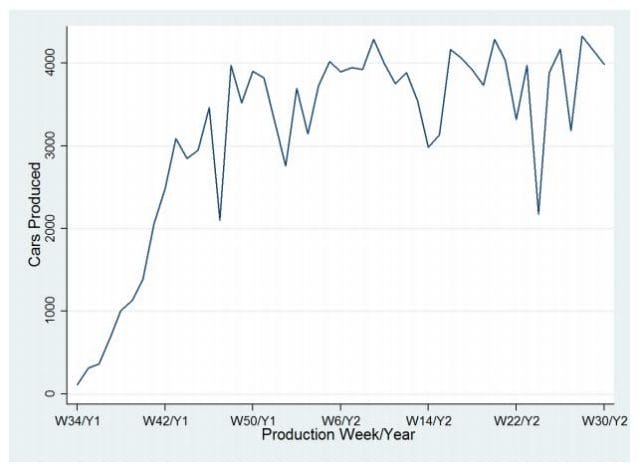Average Defects Per Car Over Time

Source: University of Chicago
The author and entrepreneur Tim Ferriss has made a living off of espousing Pareto’s Law: that 80% of your desired outcomes come from 20% of the work you put in. “Being busy is not the same as being productive,” Ferriss wrote in his Margin Manifesto.
While the 80-20 rule sounds pretty catchy, does it actually hold water? Turns out, yes. At least, on an automobile assembly line.
Economist Steve Levitt recently studied data from a major auto producer, which had introduced a new car model that required new assembly techniques. They organized workers into teams of five who rotated stations daily, helping each other when needed. One team member was in charge of team oversight, progress tracking, and training. This method disposed of the company’s traditional assembly line in which workers were only responsible for their specific, non-rotating task. Levitt tracked data on assembly defects and hours spent working on cars.
After 8 weeks, Levitt noticed that both defects per vehicle and hours spent assembling cars dropped 70%! For the next 40 weeks, average defects plateaued but still continued to gradually decrease. In other words, teams very quickly got better at their jobs.
This trajectory appears consistent with overall car production per week; the biggest increase in production took place within the first eight weeks:

Source: University of Chicago
Levitt’s research indicates that workers made most of their assembly improvements over a very short period of time. Team-based production accelerates gains because individuals can provide feedback and guidance to each other.
Learning is a nonlinear process. So if your guitar is gathering dust in the attic, it might be time to pull it out and give it just a little more time.
To get occasional notifications when we write blog posts, sign up for our email list.



